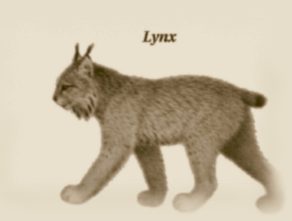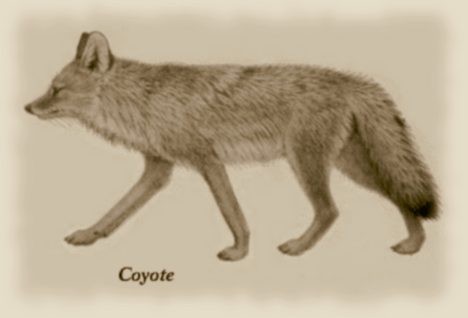Animals of the boreal forest
 |

 |
There are two classes of oscillations which have been observed. The first, among lemmings, voles (field mice), and their predators, is a three-to-five year cycle observed across large regions of northern Europe and America. The second involves hares and their predators in the forests of Canada, Alaska, and Siberia. In the boreal forests, cyclically fluctuating species include hare, lynx, coyote, marten, ermine, fox, muskrat, vole, and great horned owl.
Although, as ecological communities go, the boreal forest community is simple, it nevertheless involves many interactions among the species. One way to see is by looking at the food web, a diagram which links a food species to the species which eats it.
M & B Home | Previous | Top | Next